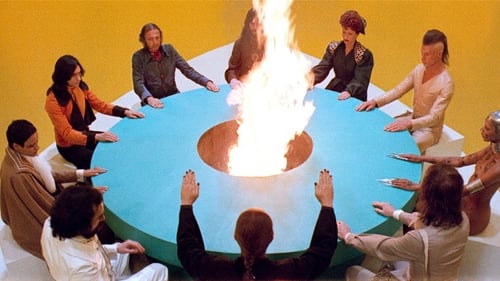
Music
Set to an excerpt of Don Cherry's Malkauns from his border-erasing 1975 album, Brown Rice, Shale Raga extracts corporate video toward resistance a la carbon-based capitalist sorcery, in this case EcoShale technology, which is patented by Alberta-based Red Leaf Resoures, Inc. and promises to "revolutionize" oil shale production in the Book Cliffs of eastern Utah.

Original Music Composer
In the Mossi culture, one of the rites attending the birth of a child and its induction as a new member of the community involves the burial of the placenta. The space in which the placenta is buried is called 'Zan Boko' - a phrase which connotes the religious, cultural and affective relations that bind the child to the land and that embraces the notions of 'rootedness' and 'belonging'. Kaboré tells the story of Tinga, who resists the encroaching urbanization of his native territory. The specific rhythms and vision of the rural community, including its values, social relationship, and individual & collective destinies, are altered when a city is planted on the edge of an ancient native village.

Moki and Don Cherry met in the mid-1960s and soon began collaborating closely. They made happenings, music, art, posters and record sleeves, they performed together, organised workshops and toured. The film merges the different worlds they lived in – countryside and city life, and the various disciplines that were interwoven in their artistic practices. Some scenes also feature Eagle-Eye Cherry as a little boy and Neneh Cherry in her teens. Other musicians from that time include Collin Walcott, Rashied Ali, James Blood Ulmer and Naná Vasconcelos. Urban Lasson also appears in the film.

Original Music Composer
とある砂漠ではりつけにされ、裸の子どもたちに石を投げつけられているキリストに似た風ぼうの盗賊(ホラシオ・サリナス)。自力で十字架から降り立った彼は、居合わせた男と共に町へ向かう。町ではキリスト像を売る太った男たちに捕らえられ、鏡の部屋に閉じ込められてしまう盗賊だったが、何とか部屋から脱出し……。

Don Cherry walks around and plays music

Music
ZERO IN THE UNIVERSE is a comedy, a cryptogram–a message in code to the viewer. Who is Zero? What universe? What is the opposition of Zero and his arch enemy, Steinmetz? What does it come from, and where, if anywhere, does it go. The film presents abundant clues, but the answers are never stated. –J. L.

A concert at the Golden Circle with Don Cherry and his quintet was filmed and then processed to an art movie using various optical effects.

Self
Documentary filmed during the 1965 International Jazz Festival in Bologna, featuring appearances by musicians such as Gato Barbieri, Don Cherry, and Mal Waldron.

A cutout of a woman's silhouette is displayed in many locations while a free jazz soundtrack is heard. The jazz musicians will pose later for the camera in a studio.

Music
A cutout of a woman's silhouette is displayed in many locations while a free jazz soundtrack is heard. The jazz musicians will pose later for the camera in a studio.

Self
A look at the life of Native American jazz saxophone pioneer Jim Pepper, the first widely recognized musician to fuse Native American music with jazz.

A 1976 television broadcast recorded at RAI studios [Rome, Italy]. Don Cherry - pocket trumpet, doussn'gouni, wooden flute, percussion, vocals, Nana Vasconcelos - tabla, berimbau, percussion, vocals, Moki Cherry - tambura, vocals, Giampiero Pramaggiore - guitar, flute, vocals









